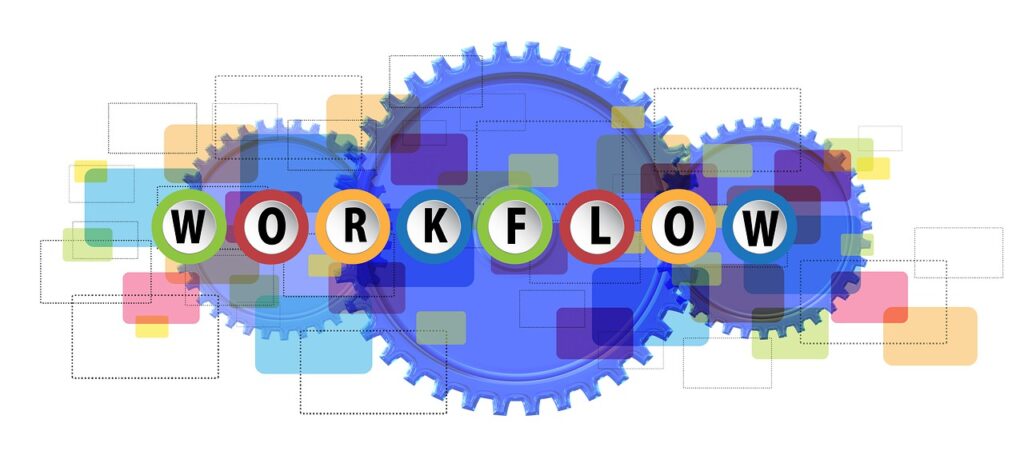Master Data Governance to Ensure Quality, Security, and Compliance – Creating a Data-as-a-Service Platform (Part 6)

Table of Contents
Data governance plays a pivotal role in the realm of Data-as-a-Service (DaaS), offering a structured framework to address the unique challenges posed by this model. DaaS involves the dynamic provision of data to diverse users, often from external entities, emphasizing the need for meticulous data management. Effective data governance in DaaS ensures that the data being shared is of high quality, reliable, and accurate. It establishes protocols for data access, defining roles and permissions to prevent unauthorized use, safeguarding against potential breaches. Additionally, data governance within DaaS addresses data privacy concerns, adhering to regulations like GDPR and HIPAA, and setting up mechanisms to manage data ownership and accountability, fostering ethical and compliant data use.
Furthermore, data governance guarantees that the metadata accompanying the data is consistent and comprehensible, facilitating better understanding and utilization of the provided data. It plays a pivotal role in fostering collaboration among stakeholders, both internal and external, by establishing clear guidelines for data sharing agreements and usage. Ultimately, data governance bolsters the longevity and utility of the DaaS platform, ensuring that data remains valuable over time, and risks such as breaches or misuse are minimized through rigorous monitoring and control mechanisms. In essence, data governance serves as the bedrock upon which the success, security, and compliance of Data-as-a-Service initiatives are built.
What is Data Governance?
Definition of Data Governance
Data governance refers to the strategic framework, processes, policies, and practices that an organization employs to manage its data assets holistically. It encompasses the management of data quality, availability, integrity, security, usability, and compliance throughout the data’s lifecycle. In essence, data governance establishes a set of rules and guidelines that dictate how data is collected, stored, accessed, used, shared, and protected. It involves collaboration among various stakeholders, including business units, IT departments, data stewards, and management, to ensure that data is treated as a valuable organizational asset.
Importance of Data Governance in Managing Data Assets Effectively
Effective data governance is crucial for organizations of all sizes and industries due to the following reasons:
- Data Quality and Consistency: Data governance ensures that data is accurate, reliable, and consistent across different systems and departments. High-quality data forms the basis for informed decision-making and strategic planning.
- Data Security and Privacy: In an era of increasing data breaches and privacy concerns, data governance provides the framework for protecting sensitive information. It defines access controls, encryption, and policies to ensure data security and compliance with regulations.
- Risk Mitigation: Data governance helps identify and mitigate potential risks related to data, such as data loss, unauthorized access, and legal liabilities. By implementing controls and monitoring processes, it minimizes these risks.
- Compliance: Organizations must adhere to various industry regulations and data protection laws. Data governance ensures that data practices align with these regulations, preventing costly fines and reputational damage.
- Decision-Making: Reliable and well-governed data enhances the accuracy of analytics and reports, leading to more informed and effective decision-making. This is particularly important as organizations rely heavily on data-driven insights.
- Efficient Data Management: Data governance streamlines data management processes, reducing duplication, redundancies, and confusion. It establishes clear roles and responsibilities for data management tasks.
- Data Collaboration and Sharing: With data being shared across departments and even with external partners, data governance establishes guidelines for data sharing agreements, ensuring that data is used appropriately and ethically.
- Long-Term Value of Data: Data governance helps maintain the value of data assets over time. Proper documentation, metadata management, and archiving strategies ensure that data remains valuable even as the organization evolves.
Challenges of Data Governance
Data governance in the context of Data-as-a-Service (DaaS) introduces several unique challenges due to the dynamic and distributed nature of data provisioning. These challenges include:
Data Ownership and Stewardship
Determining data ownership becomes complex when data is sourced from multiple providers and shared with various users. Clear data stewardship is essential to ensure accountability and proper management.
Data Consistency
DaaS involves data from diverse sources, leading to potential inconsistencies in formats, definitions, and quality. Maintaining consistent data standards across sources is a challenge.
Access Control
Managing access permissions across different user groups, including internal and external stakeholders, demands robust access controls to prevent unauthorized data usage.
Data Privacy and Security
Sharing data externally increases the risk of data breaches and privacy violations. Ensuring compliance with regulations and implementing stringent security measures is crucial.
Data Integration
Integrating data from various sources within the DaaS platform requires harmonization of data formats, schemas, and structures to deliver meaningful insights.
Metadata Management
Clear and consistent metadata is critical for understanding data context. However, managing metadata across multiple sources and ensuring its accuracy poses challenges.
Scalability
As DaaS scales to serve a larger user base, data governance processes must be scalable to handle increased data volumes and user demands.
Key Components of Data Governance
Data Policies and Standards
Data policies and standards are foundational to effective data governance in a DaaS environment. These define the rules and guidelines for data collection, storage, usage, sharing, and disposal. In the context of DaaS, clear data policies ensure that data from various sources adheres to consistent formats, definitions, and quality standards. These policies help in streamlining data integration, improving interoperability, and maintaining a high level of data accuracy across the DaaS platform.
Data Quality Management
Data quality management ensures that the data provided by the DaaS platform is accurate, reliable, and fit for its intended purpose. Robust data quality processes involve profiling, cleansing, validation, and enrichment of data to eliminate errors, inconsistencies, and redundancies. Effective data quality management enhances user trust in the DaaS platform and enables confident decision-making based on accurate insights.
Metadata Management
Metadata provides essential context and information about the data, allowing users to understand its origin, structure, and relevance. In DaaS, metadata management involves documenting data lineage, definitions, transformations, and relationships. Comprehensive metadata management helps users interpret data correctly and facilitates collaboration between data providers and users, improving the overall value of the DaaS platform.
Data Security and Privacy
Data security and privacy are critical components of data governance, especially in the context of sharing data externally through DaaS. A robust strategy includes defining access controls, encryption methods, authentication mechanisms, and data masking to protect sensitive information from unauthorized access or breaches. Compliance with data privacy regulations, along with transparent communication about data handling practices, fosters user trust and ensures legal compliance.
Data Access and Sharing
Data access and sharing mechanisms are essential to strike a balance between enabling data utilization and maintaining security. Data governance defines user roles, permissions, and access levels based on job functions and requirements. Role-based access ensures that users can only access the data that aligns with their responsibilities, preventing misuse or unauthorized access. Clear data sharing agreements and protocols facilitate collaboration among users and maintain ethical data practices.
Data Governance Workflow

Assessment and Planning
- Understand the DaaS ecosystem, including data sources, users, and data types.
- Identify data governance stakeholders, including data providers, stewards, and users.
- Assess existing data governance practices and identify gaps.
Policy Formulation
Develop comprehensive data governance policies and standards tailored to DaaS requirements.
Define data ownership, roles, responsibilities, and access controls.
Metadata Management Setup
Implement a metadata management system to capture and store metadata for all datasets.
Establish metadata validation and maintenance processes.
Technology Integration
Integrate data governance tools, such as data quality software, access control systems, and metadata management platforms.
Data Quality Improvement
Implement data profiling to identify data quality issues and inconsistencies.
Design data cleansing, enrichment, and validation processes.
Access Control and Security Deployment
Implement authentication mechanisms and access controls for users and data sources.
Integrate encryption and data security protocols.
Data Sharing Protocols and Agreements
Develop protocols for sharing data externally and define data usage agreements.
Ensure that data sharing aligns with data governance policies.
Monitoring and Compliance Implementation
Set up monitoring mechanisms to track data quality, access patterns, and compliance.
Establish alert systems for potential breaches or policy violations.
Stakeholder Engagement
Communicate the data governance framework to all stakeholders and provide training on its implementation.
Continuous Improvement
Regularly review and update data governance policies and practices based on evolving DaaS needs.
Incorporate feedback and lessons learned for continuous enhancement.
Best Practices for Data Governance

Establish Clear Ownership and Accountability
In a DaaS environment, designate data stewards and owners responsible for specific datasets. These individuals ensure the accuracy, quality, and proper usage of the data they oversee. Clear ownership helps streamline decision-making, issue resolution, and data management responsibilities, fostering a culture of accountability throughout the data lifecycle.
Collaborate Between IT and Business Teams
Effective data governance requires collaboration between IT and business units. IT teams handle technical aspects, such as implementing security measures and ensuring data availability, while business teams define data requirements and usage scenarios. Regular communication and collaboration between these teams lead to aligned data governance strategies that meet both technical and business needs.
Maintain Consistent Metadata and Data Definitions
Establish a standardized approach to metadata management that includes data definitions, lineage, and business context. Consistent metadata ensures that users can easily understand and interpret the data provided by the DaaS platform. Define and enforce data definitions across sources to prevent confusion and facilitate accurate analysis.
Implement Data Quality Controls
Prioritize data quality by defining and enforcing data quality rules and processes. Regularly assess data quality across sources and implement data cleansing, enrichment, and validation as necessary. By ensuring high-quality data, you enhance user trust and enable meaningful insights.
Adhere to Data Privacy Regulations
With DaaS involving data sharing, compliance with data privacy regulations is paramount. Understand and adhere to relevant regulations, such as GDPR or CCPA, by implementing appropriate data protection mechanisms, obtaining user consent, and documenting data processing activities.
Implement Access Control and Authorization
Define role-based access controls to ensure that users have appropriate levels of access to data based on their responsibilities. Implement strong authentication mechanisms and enforce least privilege principles to prevent unauthorized data access.
Monitor and Audit Data Activities
Regularly monitor data activities, access patterns, and changes to identify anomalies or potential security breaches. Implement audit trails to track data interactions and maintain records for compliance purposes.
Provide Data Usage Guidelines
Offer guidelines to users on how to effectively and responsibly use the data from the DaaS platform. Educate users about data sensitivity, sharing protocols, and compliance requirements to prevent misuse and maintain ethical data practices.
Continuously Update Governance Policies
Data governance is an evolving process. Regularly review and update governance policies and practices to adapt to changing DaaS requirements, industry standards, and regulations.
Foster Data Governance Culture
Instill a culture of data governance within the organization by promoting awareness, training, and commitment from all stakeholders. When data governance becomes ingrained in the organizational mindset, it becomes an integral part of daily operations.
Compliance and Regulatory Considerations – Data Governance in Canada
Adhering to data privacy regulations and compliance requirements isn’t just a legal obligation; it’s a commitment to respecting individuals’ rights and building trust in the digital era. Prioritizing compliance safeguards not only sensitive data but also the reputation and credibility of organizations.
In Canada, data governance within the context of Data-as-a-Service (DaaS) must take into account various compliance and regulatory considerations, particularly related to data privacy. The two key regulations that have a significant impact on data privacy are the Personal Information Protection and Electronic Documents Act (PIPEDA) and the General Data Protection Regulation (GDPR) when dealing with data involving European citizens.
Personal Information Protection and Electronic Documents Act (PIPEDA)
PIPEDA is Canada’s federal privacy law that governs the collection, use, and disclosure of personal information in the private sector. Here’s how it affects data governance in DaaS:
- Consent: DaaS providers must obtain informed consent from individuals before collecting, using, or disclosing their personal information. This includes explaining the purposes for data usage and obtaining consent for any secondary uses.
- Purpose Limitation: Organizations should clearly specify the purposes for which personal data is collected and ensure that it’s used only for those stated purposes.
- Data Security: PIPEDA mandates organizations to implement security safeguards to protect personal information from unauthorized access, disclosure, or misuse. Encryption, access controls, and regular security assessments are essential.
- Access and Rectification: Individuals have the right to access their personal information held by organizations and request corrections if the information is inaccurate.
- Transparency: DaaS providers must be transparent about their data practices, including data collection methods, storage locations, and third-party data sharing.
General Data Protection Regulation (GDPR)
Although GDPR is a European regulation, it affects Canadian organizations that process data of European citizens. Key considerations include:
- Data Transfers: If DaaS involves the transfer of personal data from the European Union (EU) to Canada, organizations must ensure that appropriate mechanisms (such as Standard Contractual Clauses) are in place to facilitate legal data transfers.
- Data Subject Rights: Individuals have enhanced rights under GDPR, including the right to access, rectify, erase, and restrict processing of their personal data. Organizations should be prepared to address these rights.
- Accountability: Organizations are required to demonstrate compliance with GDPR’s principles by maintaining records of processing activities, conducting data protection impact assessments (DPIAs), and appointing a Data Protection Officer (DPO) in certain cases.
- Data Breach Notification: GDPR mandates organizations to notify relevant supervisory authorities and affected individuals in the event of a personal data breach.
- Consent and Legitimate Interests: The GDPR has stringent requirements for obtaining valid consent and also allows processing based on legitimate interests. Organizations should assess which legal basis applies to their data processing activities.
- Data Protection by Design and Default: Organizations are required to implement data protection measures from the outset of any data processing activities.
Impact of Emerging Technologies on Data Governance in Canada
Artificial Intelligence (AI) and Machine Learning (ML)
Canada can harness AI and ML to enhance data governance by automating data quality checks, anomaly detection, and predictive analytics for compliance risk assessments. However, careful monitoring and accountability are crucial to prevent biased algorithmic decisions and ensure fairness.
Blockchain
Blockchain’s immutability can support transparent and auditable data trails, especially in industries like healthcare and finance. Canada can explore blockchain solutions to enhance data provenance and authentication, crucial for maintaining trust in data governance.
Privacy-Preserving AI
Canada can leverage privacy-enhancing AI techniques to protect individuals’ data while enabling data analysis. This aligns with Canada’s strong emphasis on privacy and ensures data governance practices meet evolving privacy regulations.
Secure Data Sharing
Advanced encryption and secure multi-party computation can facilitate secure data sharing. Canadian organizations can adopt these technologies to ensure that data governance is not compromised while enabling beneficial data collaborations.
Data Ethics and Bias Mitigation
Canada’s focus on inclusivity and fairness aligns with addressing bias in AI and ML. Integrating ethical considerations into data governance frameworks can prevent discriminatory outcomes and foster responsible AI use.
5 Key Takeaways on data governance for the Government of Canada in the context of Data-as-a-Service (DaaS)
Prioritize Privacy and Compliance
Uphold Canada’s strong commitment to privacy by adhering to regulations like the Personal Information Protection and Electronic Documents Act (PIPEDA) and ensuring compliance with global standards like the General Data Protection Regulation (GDPR) when dealing with data involving European citizens.
Collaboration and Partnerships
Foster collaboration between government departments, data providers, and users to establish unified data governance standards and practices. Partnerships ensure a consistent and coordinated approach to data management and governance across government agencies.
Transparent Data Use
Embrace transparency in data practices, including data collection, usage, sharing, and analysis. Communicate clearly with citizens about how their data is being used, empowering them with knowledge about their data’s journey.
Ethical AI and Responsible Innovation
Embrace emerging technologies like AI and machine learning while upholding ethical considerations. Ensure AI algorithms are transparent, unbiased, and accountable, aligning with Canada’s focus on inclusive and responsible innovation.
Data Literacy and Education
Invest in data literacy programs for government employees and citizens alike. Promote understanding of data governance principles, data security practices, and the responsible use of data, fostering a culture of informed data decision-making.
This marks the sixth installment of my series on “Crafting a Data-as-a-Service Platform.” For those intrigued by this subject, I invite you to delve into the preceding articles, encompassing Part 1 through 5.




Leave a Reply